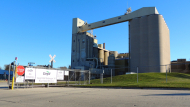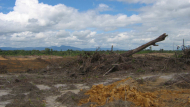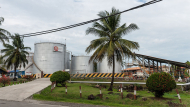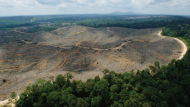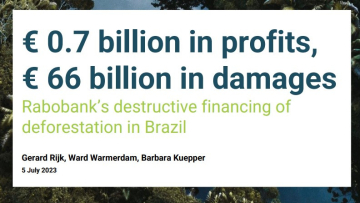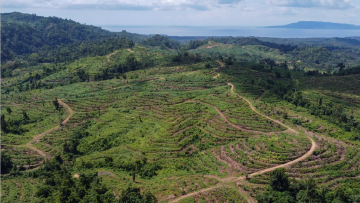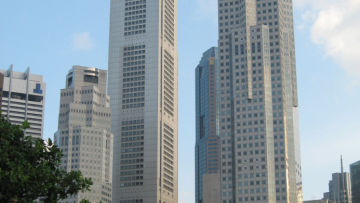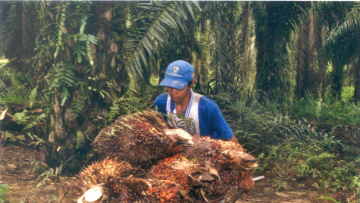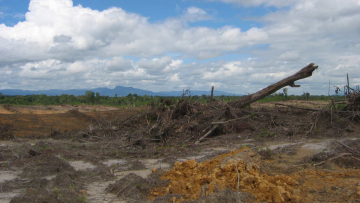Banks and palm oil

Palm oil production has exploded in the past two decades to become the world's most widely traded vegetable oil. Current production of nearly 80 million tons is projected to double again in the next decade. As the palm oil tree only grows in the tropics, nearly 90% of global production comes from Indonesia and Malaysia. Forest destruction for palm oil expansion is spreading quickly in Southeast Asia and to other rainforest regions in Central Africa and Latin America. About 68% of palm oil is used for foods, with the remainder used for industrial purposes including bio-diesel.
Palm oil is associated with 10.5 million hectares of deforestation from 2001-15, making it the second biggest driver of deforestation behind cattle threatening the world’s most biodiverse forests. Indonesia’s rainforests are one of earth’s most biologically and culturally rich landscapes. With just 1 percent of the Earth’s land area, Indonesia’s rainforests contain 10% of the world’s known plants, 12% of mammals and 17% of all known bird species. Oil palm plantations are also associated with the introduction of invasive species, which can displace other species and cause conflicts between humans and wildlife where species such as tigers or orangutans are displaced.
Palm oil production methods cause the destruction of carbon-rich tropical ecosystems meaning it contributes significantly to climate change. Peatlands, which are carbon-rich wet ecosystems that have sequestered billions of tons of carbon through thousands of years of accumulating leaf litter and organic material, is converted for palm oil plantations. This conversion has already contributed significant amounts of carbon dioxide to the atmosphere and further expansion will risk even more emissions being released. In Indonesia, around 85% of emissions released are due to land-use activities, with 37% due to deforestation and 27% due to peat fires.
The palm oil industry is not only a major contributor to climate change and biodiversity destruction, it is also associated with persistent human rights violations. Corporate land grabbing of Indigenous and community forests for palm oil plantations and conflicts between companies and rural communities are prominent in the industry. The Indonesian palm oil monitoring group SawitWatch has identified 663 ongoing land disputes between palm oil companies and rural communities. Private armies and paramilitaries have been deployed to take and maintain control over lands on behalf of palm oil companies, resulting in displacement, incarcerations, injuries and deaths. In addition, labour conditions in the palm oil sector are often poor and industrial plantations are reported to rely on the use of forced and child labour.
Palm oil production is associated with high rates of deforestation as well as monocultures. There is a growing body of evidence that shows the connection between deforestation and an increasing risk for disease outbreaks and pandemics. The decline in biodiversity results in the loss of natural disease regulationa nd poses a risk for human, animal and environmental health. Deforestation is also an important driver of climate change which itself increases the risk for future pandemics.
Role of banks
Banks play a role in continuing to finance the palm oil industry, thereby contributing to negative impacts on climate, nature, human rights, and the risk of future pandemics. Since 2016, financial institutions have provided US$38 billion to the Southeast Asian palm oil sector.
Policy analysis
The Forest & Finance coalition, of which BankTrack is a part, assesses the policies of 200 of the largest banks and investors active in six key commodities sectors driving deforestation and land degradation in Southeast Asia, Central and West Africa, and parts of Latin America. The table in the Policy section below presents the analysis of commercial and development bank’s policies related to palm oil.
The Forest & Finance coalition, of which BankTrack is a part, assesses the policies of 200 of the largest banks and investors active in six key commodities sectors driving deforestation and land degradation in Southeast Asia, Central and West Africa, and parts of Latin America.
The table below presents the analysis of commercial and development bank’s policies related to palm oil. For a summary of the compiled policy assessments and for the details on the scoring criteria, check the Forests & Finance website here.
Forest & Finance Policy Assessment 2022: Palm Oil
A bank can obtain a total of 10 points for the quality of its palm oil policy. The total score is based on their scores per sector, weighted against their financing and investment for each sector. For further details on this see here. Based on their overall score, banks are then classified as Laggards, Followers, Front runners or Leaders, as follows:


